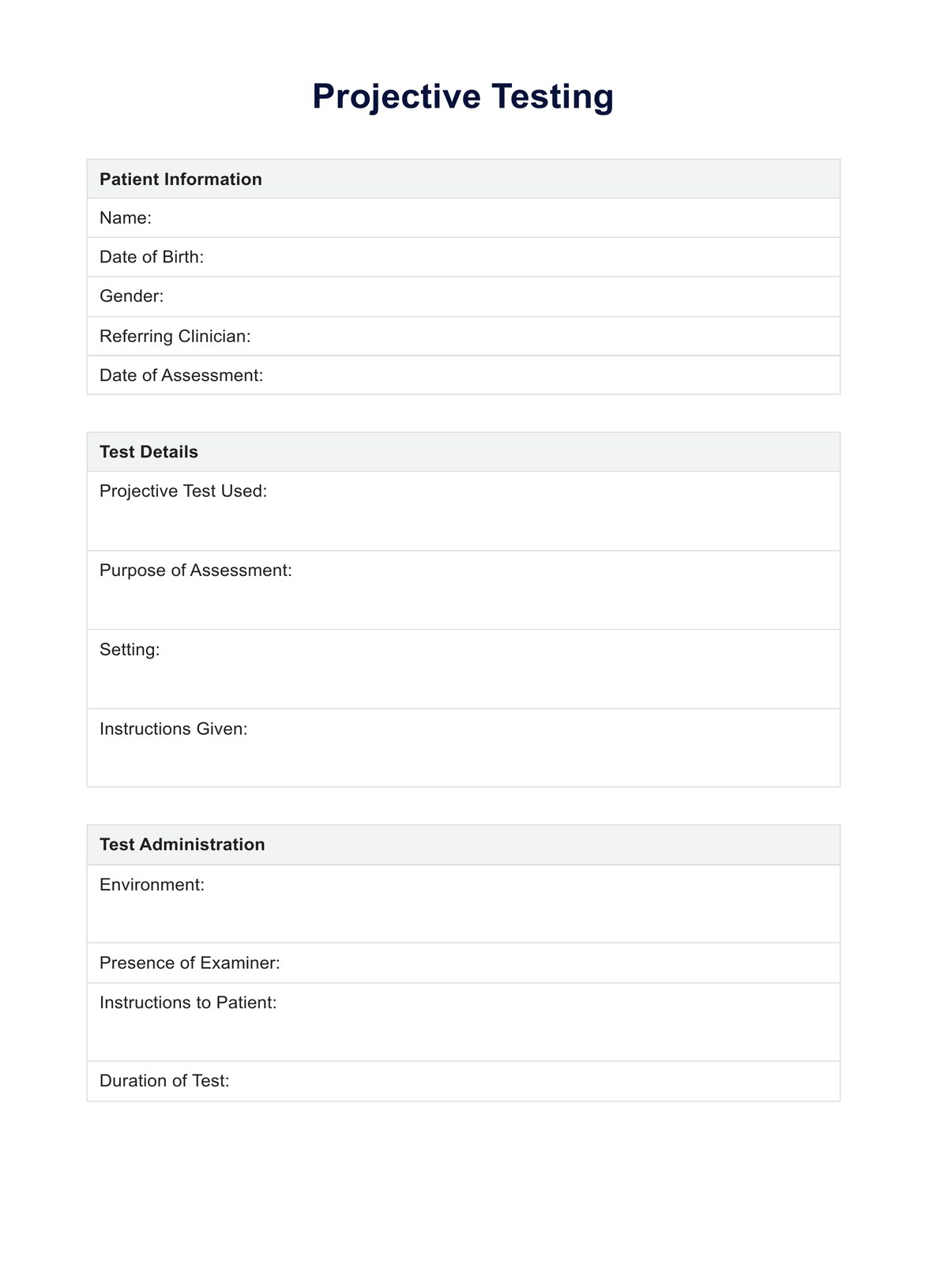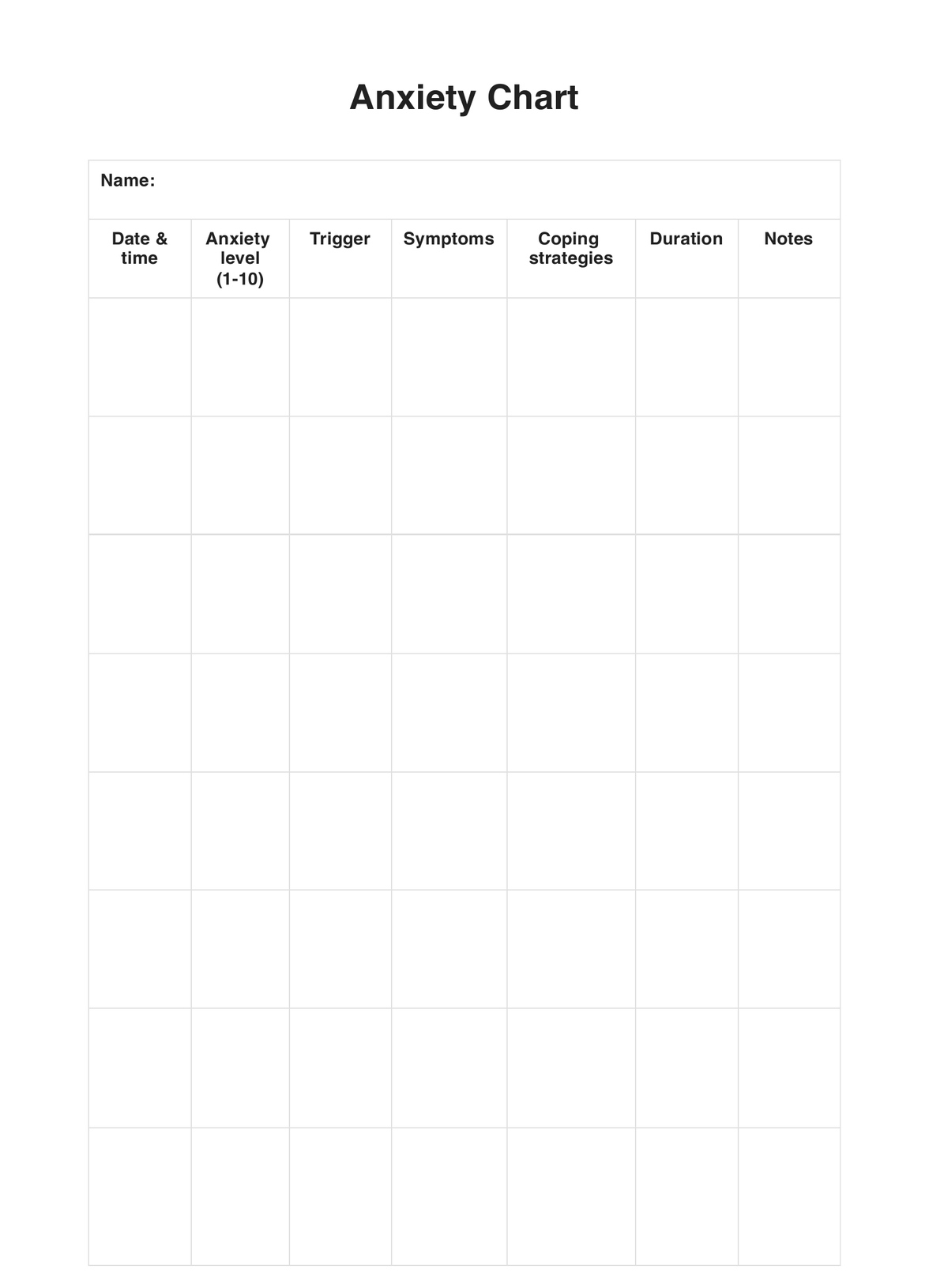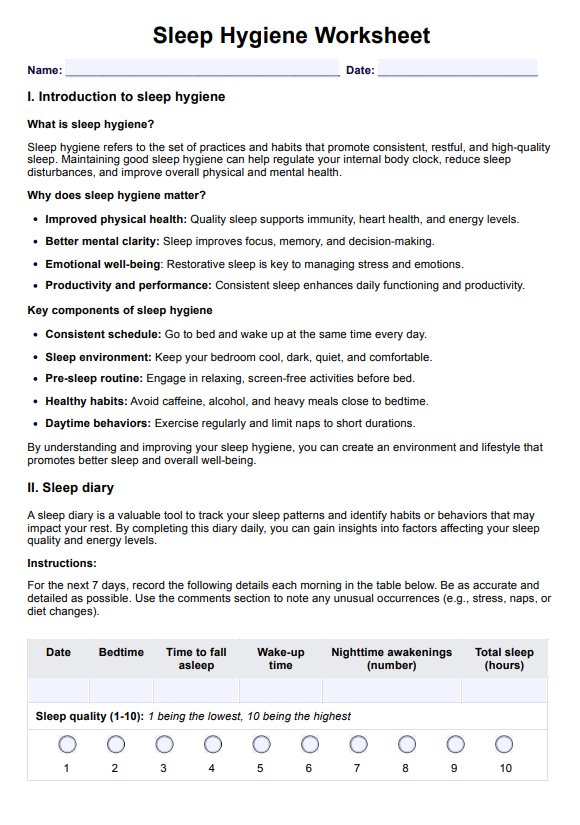Reflecting on Boundaries PTSD Worksheet
Access a free PDF of our Reflecting on Boundaries PTSD Worksheet and discover how setting boundaries can help clients manage symptoms.


What is Reflecting on Boundaries PTSD Worksheet?
Post-traumatic stress disorder (PTSD) can make it challenging for individuals to navigate their emotional landscape. Establishing clear boundaries becomes crucial in this context.
Physical and emotional Boundaries can be protective barriers that empower individuals with PTSD to manage their symptoms more effectively. They provide a sense of control and security, creating a predictable environment where triggers can be minimized.
Establishing these boundaries might involve communicating with loved ones about their needs or identifying situations that may exacerbate symptoms. Encouraging autonomy, self-awareness, and setting boundaries can be essential in healing and recovering from PTSD.
A can be a valuable tool to facilitate this process. It allows individuals to reflect on their current boundaries and identify areas where they may need to establish or reinforce them. This like a modern PTSD worksheet, this worksheet can also assist therapists in guiding their clients to set boundaries and explore their benefits.
Additionally, the worksheet helps individuals recognize the importance of self-care and how setting boundaries can contribute to their well-being. It also allows them to discuss potential challenges that may arise when trying to establish boundaries, such as guilt or fear.
Reflecting on Boundaries PTSD Worksheet Template
Reflecting on Boundaries PTSD Worksheet Example
How to use the Reflecting on Boundaries PTSD Worksheet
Carepatron's printable Reflecting on Boundaries PTSD Worksheet can help your clients explore their boundaries and create a plan to establish or reinforce them. Here's how you can use the template in therapy sessions:
Step One: Access the template
Get a copy of the free Reflecting on Boundaries PTSD Worksheet using the link on this page. You may also download it from the Carepatron app or our resources library.
Step Two: Explain the concept of boundary to your client
Start by discussing the idea of boundaries and their importance in managing symptoms of PTSD. Use examples to illustrate how establishing boundaries can lead to better self-awareness, autonomy, and mental well-being.
Step Three: Client reflects on current boundaries
Ask your client to reflect on their current boundaries using the worksheet. They can do this alone or with a loved one's support if they feel comfortable. Encourage them to be honest and thorough in their reflections.
Step Four: Identify areas of improvement
Once your client has completed the worksheet, review their responses together. Help them identify areas where they may need to set or reinforce boundaries.
Step Five: Develop a boundary plan
With your client's input, create a boundary plan tailored to their needs and challenges. This can include setting clear boundaries with family, friends, and coworkers and implementing self-care practices.
When would you use this Reflecting on Boundaries PTSD Worksheet?
You can use Carepatron's free Reflecting on Boundaries PTSD Worksheet with clients diagnosed or experiencing symptoms of PTSD. This worksheet can be used at any therapy stage, whether during the initial assessment phase or as part of ongoing treatment. Moreover, you can utilize the template to:
Enhance your client's self-awareness
Our Reflecting on Boundaries PTSD Worksheet can help your clients better understand themselves and their boundaries. Through reflective prompts, they can identify areas where they may struggle with setting or maintaining boundaries.
Promote healthy boundary-setting
The goal of this worksheet is not only to reflect but also to develop a plan for setting healthy boundaries going forward. By working through the questions and exploring ways to implement boundaries, your clients can take proactive steps toward improving their well-being.
Improve communication and relationships
Unhealthy boundaries can often lead to conflict or strained relationships. Using this worksheet, your clients can identify areas where boundary-setting may improve their interactions with others and work towards healthier communication.
Facilitate personal growth and healing
The Reflecting on Boundaries PTSD Worksheet is designed to help your clients explore their past experiences and how they may have impacted their ability to set boundaries. By reflecting on these experiences, individuals can start healing and move towards personal growth.
What are the benefits of using this Reflecting on Boundaries PTSD Worksheet?
Here are some of the benefits of using our free Reflecting on Boundaries PTSD Worksheet:
It's easy to use and understand
The worksheet is designed to be user-friendly and easy to understand. The reflective prompts are straightforward, making them accessible for individuals of all levels.
It can be used in various settings
Whether you're a therapist, counselor, or mental health professional, the Reflecting on Boundaries PTSD Worksheet can be incorporated into your practice. It's also suitable for individuals who may be exploring their boundaries on their own.
It's customizable
You can modify the worksheet to fit your client's needs and preferences. This can include adding or removing prompts, changing the language, or adapting it for different populations.
It fosters open communication
As clients reflect on their boundaries, they may uncover thoughts and feelings they haven't expressed. This worksheet is a safe space to explore these emotions and promote open communication.
It promotes emotional intelligence
Understanding and setting boundaries requires a certain level of emotional intelligence. Through this worksheet, clients can recognize and acknowledge their feelings and those of others, an essential aspect of emotional intelligence.
Commonly asked questions
The time it takes to complete the worksheet may vary depending on the individual and their level of reflection. Some may be able to complete it in one session, while others may require more time. It's essential to allow enough time for thorough reflection and not rush through the prompts.
You can use this worksheet as a standalone exercise or incorporate it into your regular therapy sessions. It can benefit clients who struggle with setting and maintaining boundaries in their relationships.
Mental health professionals can use this worksheet in individual or group therapy sessions with their clients. Individuals interested in self-reflection and personal growth can also benefit from this worksheet.


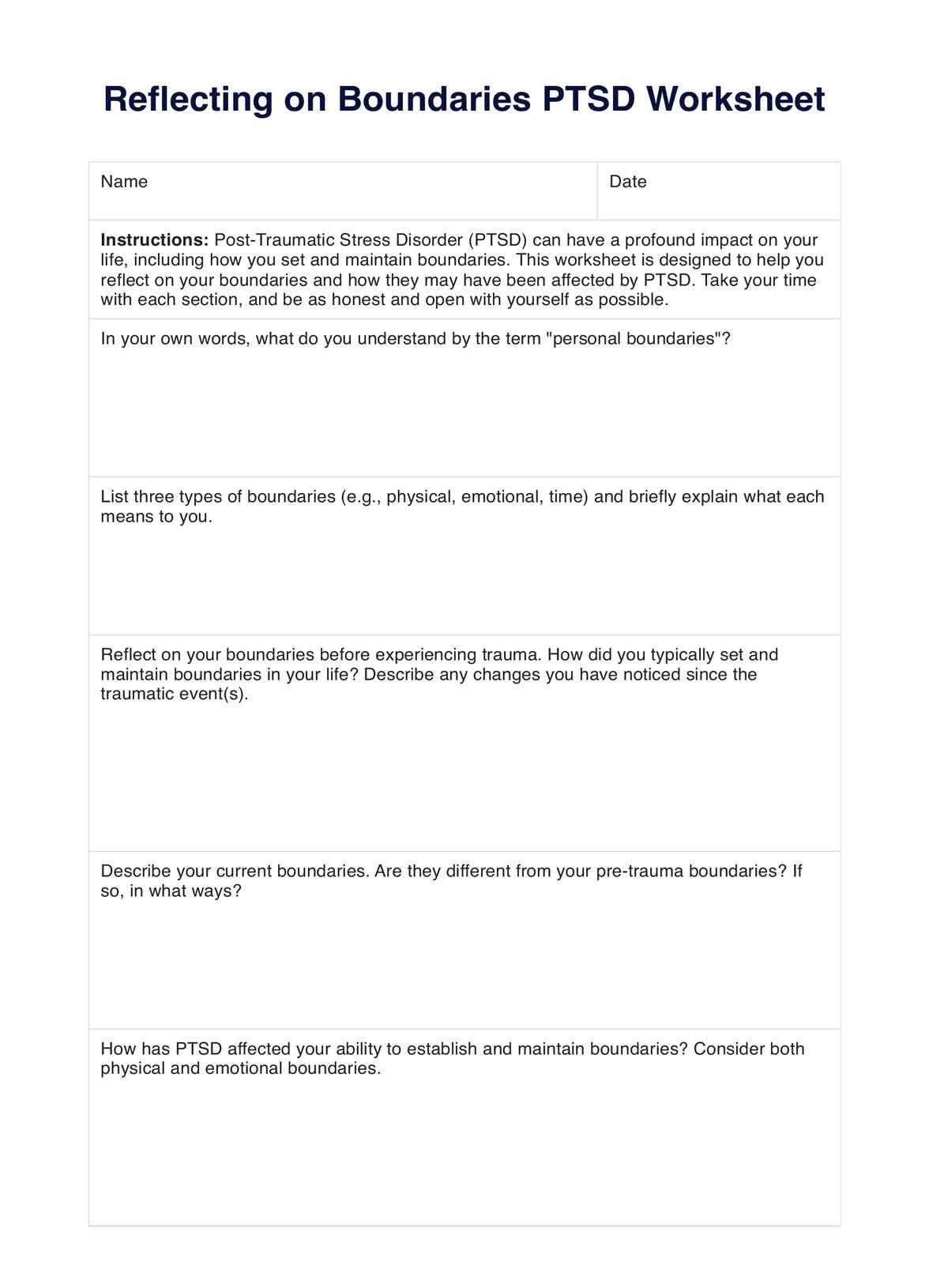
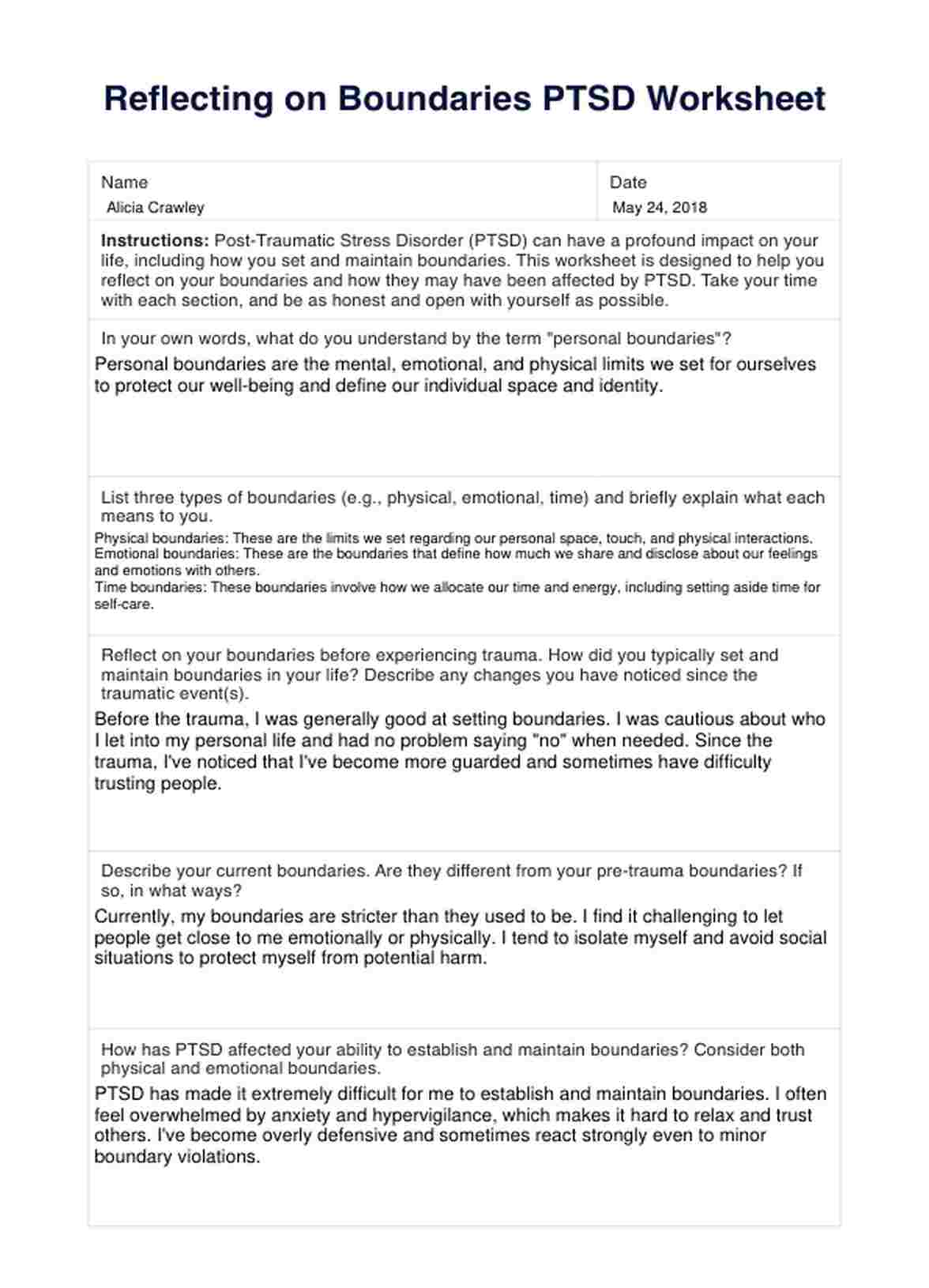
















-template.jpg)



























































































